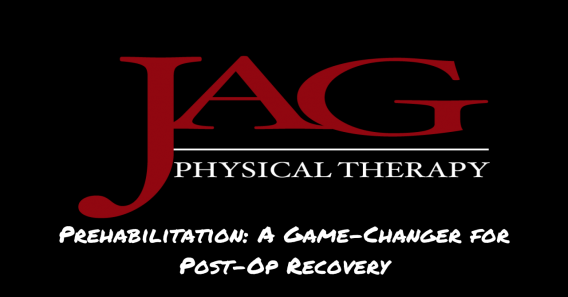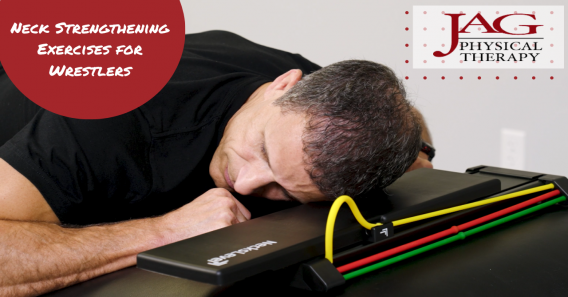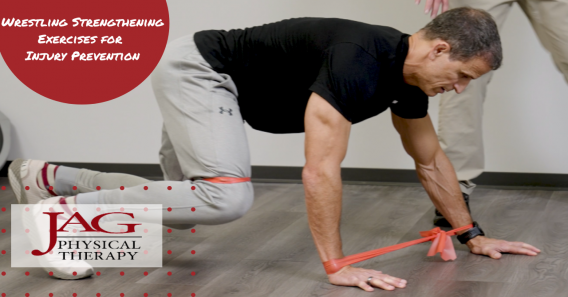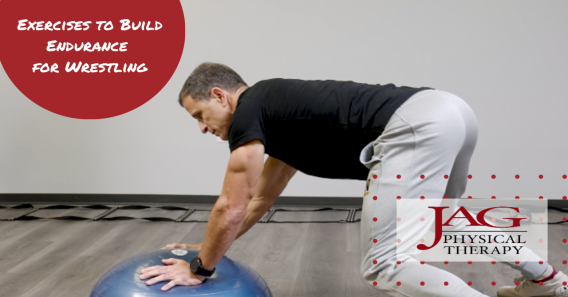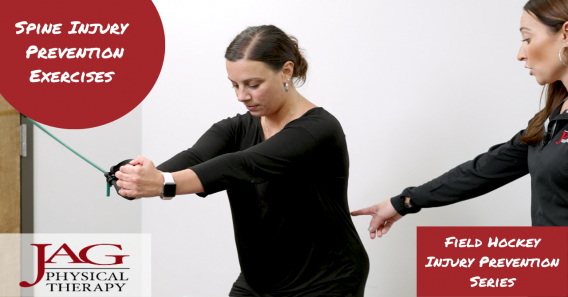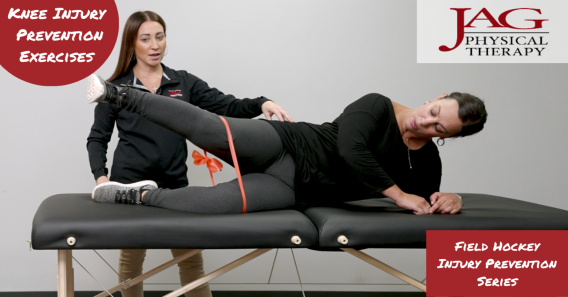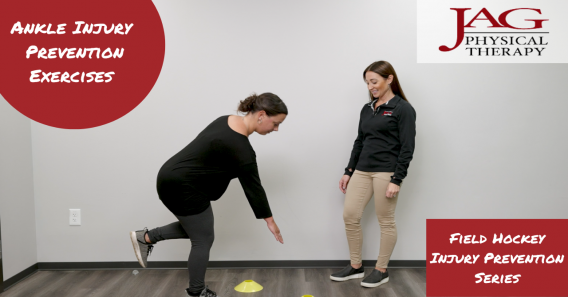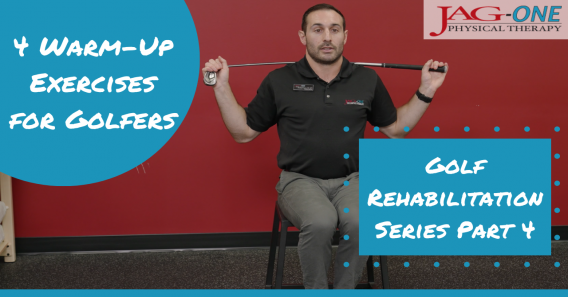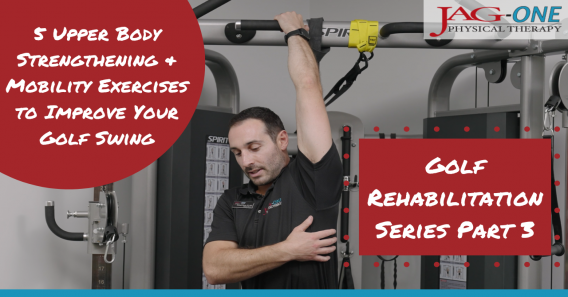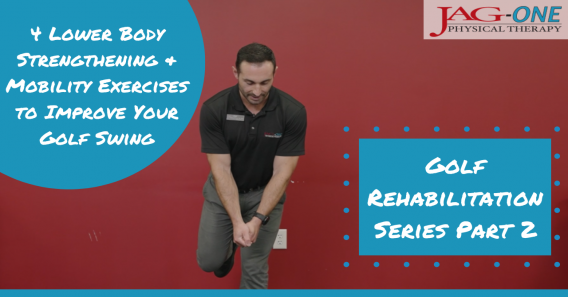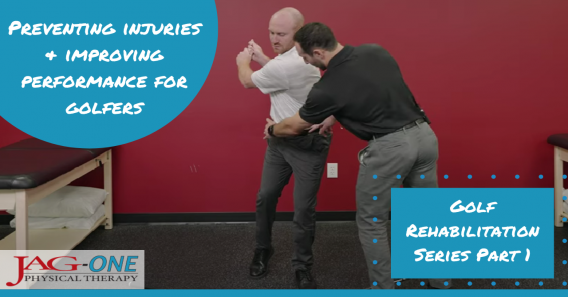Injury prevention for contact sports is an essential part of your training. If you practice contact sports, you always run the risk of injury. The most common injuries linked to contact sports include lumbar muscle strain, concussion, and ankle sprain. Any of these can interrupt your activity program and set back your training.
At JAG Physical Therapy, we’re New Jersey, Pennsylvania, and New York’s top name in injury prevention. Our compassionate and skilled team will make sure you receive a custom program suited for you and your needs. Book your appointment now to get started, find your nearest JAG PT location, or see below to learn more about injury prevention for contact sports.
What Are the Common Injuries in Contact Sports?
Let’s take a look at five of the most common injuries in contact sports.
- Lumbar muscle strain:A study (1) that looked at different types of sports injuries found that lumbar muscle strain was the most common injury in the sample group. This term refers to strain of the tendons and muscles of the lower back.
- Concussion:Another study (2) found that 3.8 million incidences of concussion occur each year in the United States as a result of sports and leisure activities. Concussion is a mild form of traumatic brain injury caused by a blow to the head and can cause headache, nausea, and confusion.
- ACL tear: The ACL is the anterior cruciate ligament. An ACL tear is one of the most common sports injuries in athletes. It’s also one of the most debilitating since it requires surgery to fix. In contact sports, ACL tear injuries are more common in females than males (3).
- Shoulder dislocation: As the shoulder has the greatest range of motion of all the joints, it’s not a surprise to learn that shoulder dislocations make up around half of all major joint dislocations (4). It is also one of the most common sports injuries.
- Ankle sprain: This type of injury is common in contact sports such as basketball, soccer, and football (5). It happens when the ligaments in your ankle are torn or stretched when you twist your ankle or fall. A severe strain can take up to 12 weeks to heal.
How Can Proper Training Reduce the Risk of Injuries?
Proper training techniques and conditioning can help build strength and prevent injury.
Here are some activities you can practice to strengthen your muscles and improve flexibility:
- Jump training: Hopping and skipping exercises bring a wealth of benefits. They build strength, improve balance, and increase agility.
- Yoga: This is an excellent way to work on your balance. Yoga will also help with strength and flexibility, and you can increase intensity according to your level of fitness.
- Weights: Build up your muscles and strength by including two or three weight training sessions in your weekly activity program.
What Role Does Equipment Play in Injury Prevention?
Using appropriate, well-maintained gear like helmets and mouth guards can help prevent injury too.
Make sure you select correctly sized protective gear for your sport. Some equipment like mouth guards will need to be custom-made. Other items can be bought off the shelf.
You must take care to maintain your equipment properly. Inspect it regularly for signs of wear and tear and replace it if necessary.
How Can Physical Therapy Help in Preventing Sports Injuries?
Physical therapy has a valuable role to play in injury prevention for contact sports, helping to build strength and flexibility and educate about injury.
The preventative physical therapy programs available at JAG Physical Therapy are made to reduce the risk of injuries. Our athletic training services help you and your team maintain fitness while educating on the prevention of injury.
Meanwhile, our injury prevention programs focus on keeping you safe and strong throughout the season.
Stay Safe and Perform at Your Best with JAG Physical Therapy
Prevention is always better than cure — and enlisting the help of professional physical therapists for injury prevention is an excellent way to avoid injury.
Schedule a consultation with JAG Physical Therapy today to enhance your performance and prevent debilitating injuries.
References
- Prieto-González, P., Martínez-Castillo, J., Fernández-Galván, L., Casado, A., Soporki, S., Sánchez-Infante, J., (2021). Epidemiology of Sports-Related Injuries and Associated Risk Factors in Adolescent Athletes: An Injury Surveillance, International Journal of Environmental Research and Public Health, 2021 May; 18(9): 4857. Published online 2021 May 2. doi: 10.3390/ijerph18094857
- Hallock, H., Mantwill, M., Vajkoczy, P., Wolfarth, B., Reinsberger, C., Lampit, A., Finke, C., (2023). Sports-Related Concussion, Neurology Clinical Practice, 2023 Apr; 13(2): e200123. Published online 2023 Feb 21. doi: 10.1212/CPJ.0000000000200123.
- Montalvo, A., Schneider, D., Webster, K., Yut, L., Galloway, M., Heidt, R., Kaeding, C., Kremcheck, T., Magnussen, R., Parikh, S., Stanfield, D., Wall, E., Myer, G., (2019). Anterior Cruciate Ligament Injury Risk in Sport: A Systematic Review and Meta-Analysis of Injury Incidence by Sex and Sport Classification, Journal of Athletic Training, 2019 May; 54(5): 472–482. Published online 2019 Apr 22. doi: 10.4085/1062-6050-407-16
- Abrams, R., Akbarnia, H., (2023). Shoulder Dislocations Overview. National Library of Medicine, August 8, 2023. https://www.ncbi.nlm.nih.gov/books/NBK459125/
- 5. Kerr, Z., Nedimyer, A., Simon, J., Kossman, M., Corbett, R., Chandran, A., (2022). The Epidemiology of Ankle Sprains in US High School Sports, 2011-2012 to 2018-2019 Academic Years, Journal of Athletic Training, 2022 Nov 1;57(11-12):1030-1038. doi: 10.4085/1062-6050-0664.21.
































